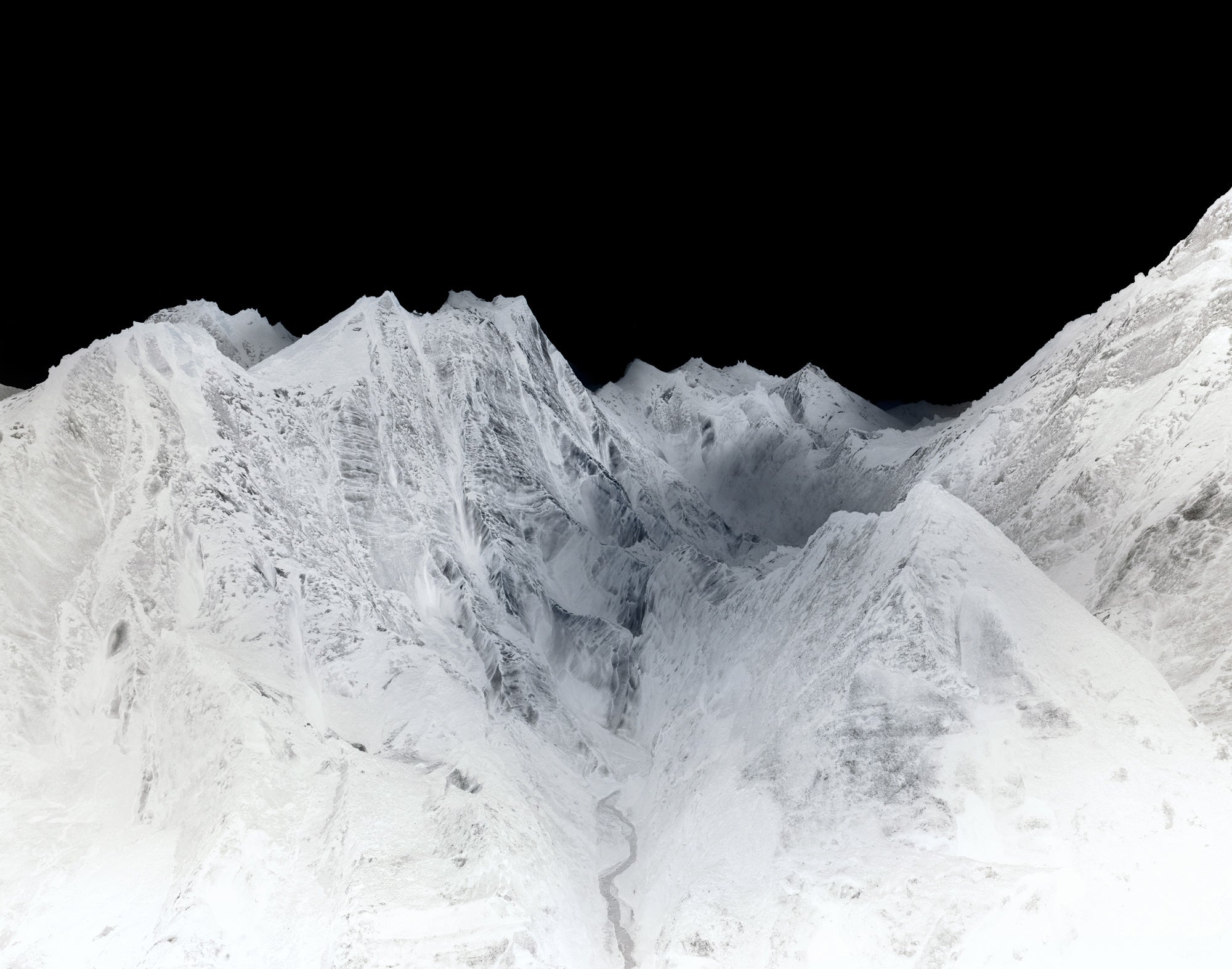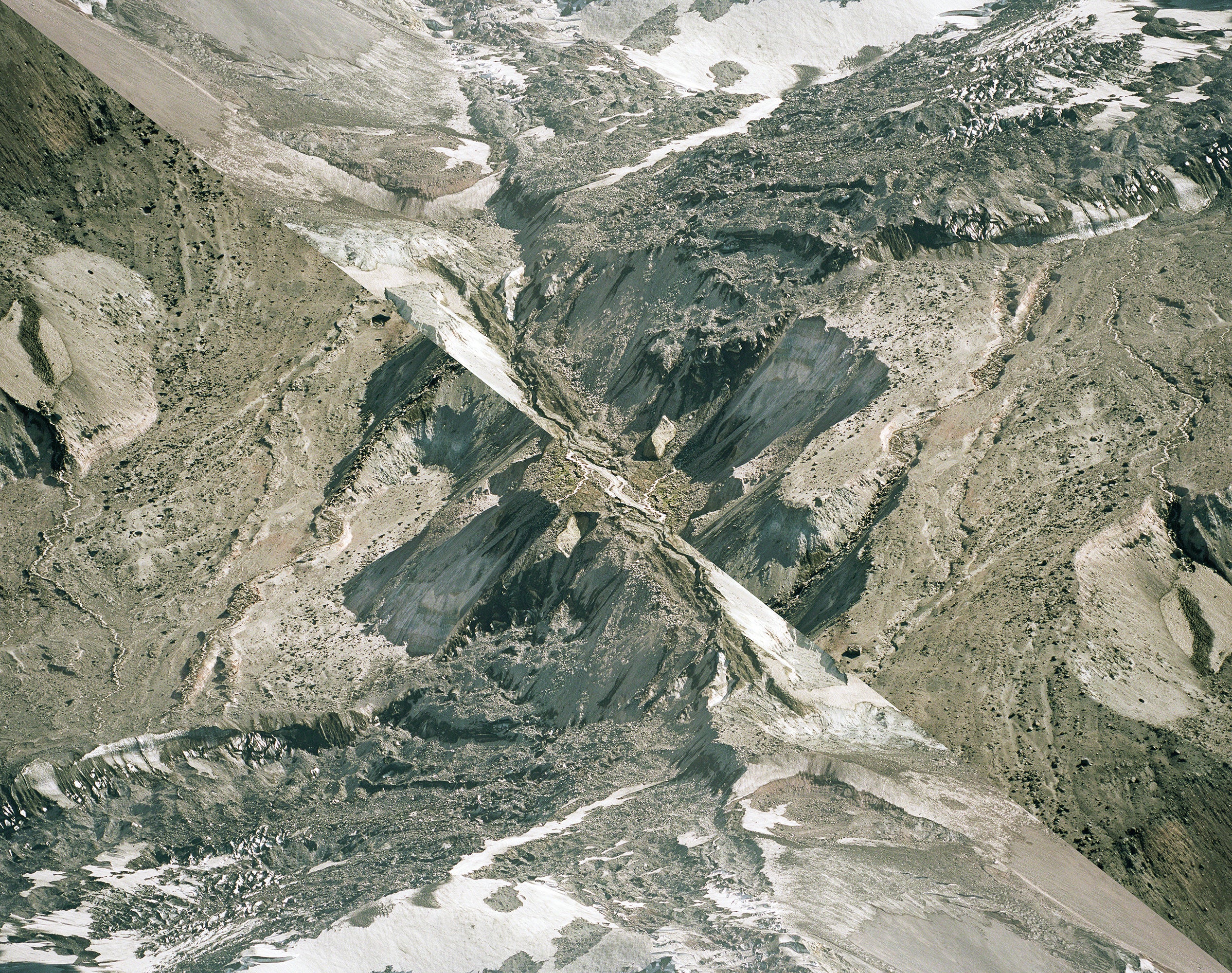
For the last 20 years, British photographer Dan Holdsworth has been uniting his love for exploration and the natural world through the simple mechanisation of photography. His work is characterized by the use of traditional techniques, long-exposure times and radical abstractions of geography which challenge our perceptions and reinvent the notion of landscape. Much of his work explores the limits of perception and the possibilities of photography, which has led him to collaborate with acclaimed brands such as Moncler and Audemar Piguet, producing multiple books and showcasing his artwork in galleries around the world.
We catch up with Dan to learn more about his love for the elements, and his interest in photographing unpeopled places.

“Courtesy The Artist/Dan Holdsworth"
S:Let’s start at the beginning. When did you first get into Photography?
D:I first picked up a camera when I was 14. I always loved nature and being outdoors. I was a keen ornithologist and my first attempts at photography were to try and capture images of the wildlife around where we lived, but I quickly became more interested in landscape.
My father was a keen amateur photographer and travelled world-wide for his work, so he was always sending us postcards from Japan or California or Italy and then giving as slide shows with stories of his travels. He never shot movies and always shot on 35mm Kodachrome with an Olympus OM10 that I used to borrow to take my first pictures.
 “Courtesy The Artist/Dan Holdsworth"
“Courtesy The Artist/Dan Holdsworth"
S:Where about’s do you live, where did you grow up?
D:I was born in Hertfordshire just north of London and we moved around quite a lot in my early years, from there to Belgium, Scotland and then eventually we settled in North Yorkshire, in the countryside of the Yorkshire Moors National Park, but also close to the industrial towns of Teeside. Actually the village I grew up in is called Great Ayton and was the childhood home of Captain James Cook. I lived in London for thirteen years and for the past ten years have lived back in the North East of England in a town called Whitely Bay close to the beach.
 “Courtesy The Artist/Dan Holdsworth"
“Courtesy The Artist/Dan Holdsworth"
S:What did you want to do when you grew up?
D:I knew that I wanted to do something creative and something that would mean spending a lot of time outdoors. My father Pete was a physicist and my mother Chris is a ceramicist and gardener. So I grew up surrounded by art and science with the influence of my fathers travelling. I got really immersed in photography at quite a young age and had my own black and white darkroom at home, nothing fancy just a super simple set-up, but it allowed me to take the photographs, process my own film and make my own prints. I went onto study photography at my local art college.
 “Courtesy The Artist/Dan Holdsworth"
“Courtesy The Artist/Dan Holdsworth"
S:When did you realise you could make a career out of Photography?
D: I was nineteen years old and two years into a photography degree when I realised that if I wanted to make it my career that I should go to London and work as a photographers assistant to see how the real world of professional photography worked. So I dropped out of the course and headed to London. It was 1993, London was in a depression, and there was no internet or email, so the only way to get in touch with people was by phoning them directly or writing a letter to them. I wrote to the fashion photographer Jurgen Teller several times and to his agent, and after a while was invite to spend the day with him and his assistant at his studio in Nottinghill. Jurgen is an excellent table-tennis player and I used to play tennis for my county, so we had a quite a long competitive table-tennis match at his office. His assistant at the time very generously put me in touch with a photographer who was looking for a new assistant. I assisted in London, New York, ands Miami for two years and then went back to art college to finish my studies with a more focussed approach to my work.
 “Courtesy The Artist/Dan Holdsworth"
“Courtesy The Artist/Dan Holdsworth"
S:What’s your go to set up? (Camera)
D:I have three set-ups. I use a large format 5x4 inch plate film camera for my analogue work. For my digital aerial mapping work I use a drone and combine this with a mirrorless digital camera for my ground based mapping work.
 Image credit: Mark Allan
Image credit: Mark Allan
S:You shoot a lot in the landscapes of the outdoors and in the elements, has this always been a passion?
D: Yes I have always been interested in landscape, architecture and the environment alongside interests in science and technology which I try to bring together in my work.
 “Courtesy The Artist/Dan Holdsworth"
“Courtesy The Artist/Dan Holdsworth"
S:What are the challenges when shooting in the elements?
D:Ah yes, it can sometimes be very challenging indeed! I’ve shot a lot in Iceland and the Alps as well as Norway, but the location that has been really tough is a place in Switzerland called the Valley de Joux also known locally as ‘little Siberia’ it is the coldest valley in Switzerland with winter temperatures frequently hitting minus 20. So you have to be well prepared when you go out for a 12 hours dusk til dawn shoot!
 “Courtesy The Artist/Dan Holdsworth"
“Courtesy The Artist/Dan Holdsworth"
S:Favourite place you have travelled to shoot?
D: I am lucky to have made 10 trips to Iceland since 2000 and perhaps this tells a story in itself. I do feel at home there.
 “Courtesy The Artist/Dan Holdsworth"
“Courtesy The Artist/Dan Holdsworth"
S:You have worked with some incredible luxury brands including Moncler and Audemar Piguet, how did these come about?
D: Moncler’s owner Remo Ruffini had collected my Blackout work and his creative director Francesco Ragazzi had bought a copy of the book, so apparently they were talking about my work and decided to get in touch. A year later we had developed the Moncler Blackout capsule collections for Winter 2014.
Working with Audemars Piguet came about through a meeting with their creative director Paul Jarvis. My first projects for AP were in 2011 and continued for almost a decade, so I would go out to Switzerland to shoot twice a year for two or three weeks at a time. The resulting landscape photographs have been exhibited at Art Basel in Miami, Basel and Hong Kong and used in their global adverting.
 “Courtesy The Artist/Dan Holdsworth"
“Courtesy The Artist/Dan Holdsworth"
 “Courtesy The Artist/Dan Holdsworth"
“Courtesy The Artist/Dan Holdsworth"
S:Tell us about mapping, and how you were able to combine this with your photography?
D: In 2011 I made a trip to Mount St Helens a volcano in the North West US, which is unusual in that since it erupted in 1980 and whilst still being very active, a glacier has formed within it’s caldera, one and half miles long and 300 feet deep, it is more than likely to disappear within one human life-time because of an eruption, so it’s cycle from birth to death is so short for such a large geological formation that it makes for an interesting story of TIME. I was researching it and came across US Geological Survey Data and 3D models of it, and was struck profoundly by the nature of the material both aesthetically and conceptually. The data was radar mapped by NASA Satellite. I decided that I needed to understand more about the process and production of this kind of new imaging technology. There is an early history of modern mapping and early photography from the 19th Century in which photographers for example in the US were commissioned by the government to go out and survey the American West. In many cases it was photographers who were the first western artists to image these landscapes, before painters, so there are interesting and important parallels to our times now with our new mapping technologies that are embedded in our everyday lives.
In my own practice I now use aerial photographic surveys which I combine with 3D software to create my own data and landscape models which I use as the basis for creating my work, Continuous Topography is a key series for me using this method.
 “Courtesy The Artist/Dan Holdsworth"
“Courtesy The Artist/Dan Holdsworth"
S:As technology keeps getting better and better, it’s gives everyday people more of a chance to take professional looking photos. How do you see the industry changing over the next 10 years?
D: I think there is going to be more hybrid technology in which various processes are combined to create images which will be technically sophisticated. The new iPhone for example which has inbuilt Lidar, laser scanning capabilities. The big question is whether we are able to keep up with this fast rate of change and truly understand the meaning of the tools we will be using. I do hope so!
 “Courtesy The Artist/Dan Holdsworth"
“Courtesy The Artist/Dan Holdsworth"
S:Lastly any quick bit of advice for someone who wants to make a career out of photography?
D:I would say follow your passion. Involve yourself in the whole process. Learn everything, read everything, be honest and critical with yourself, always be open to new ideas… and learn about the business side of photography.
To find out more about Dan, please visit his personal website and Instagram





